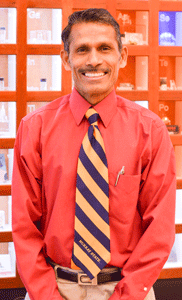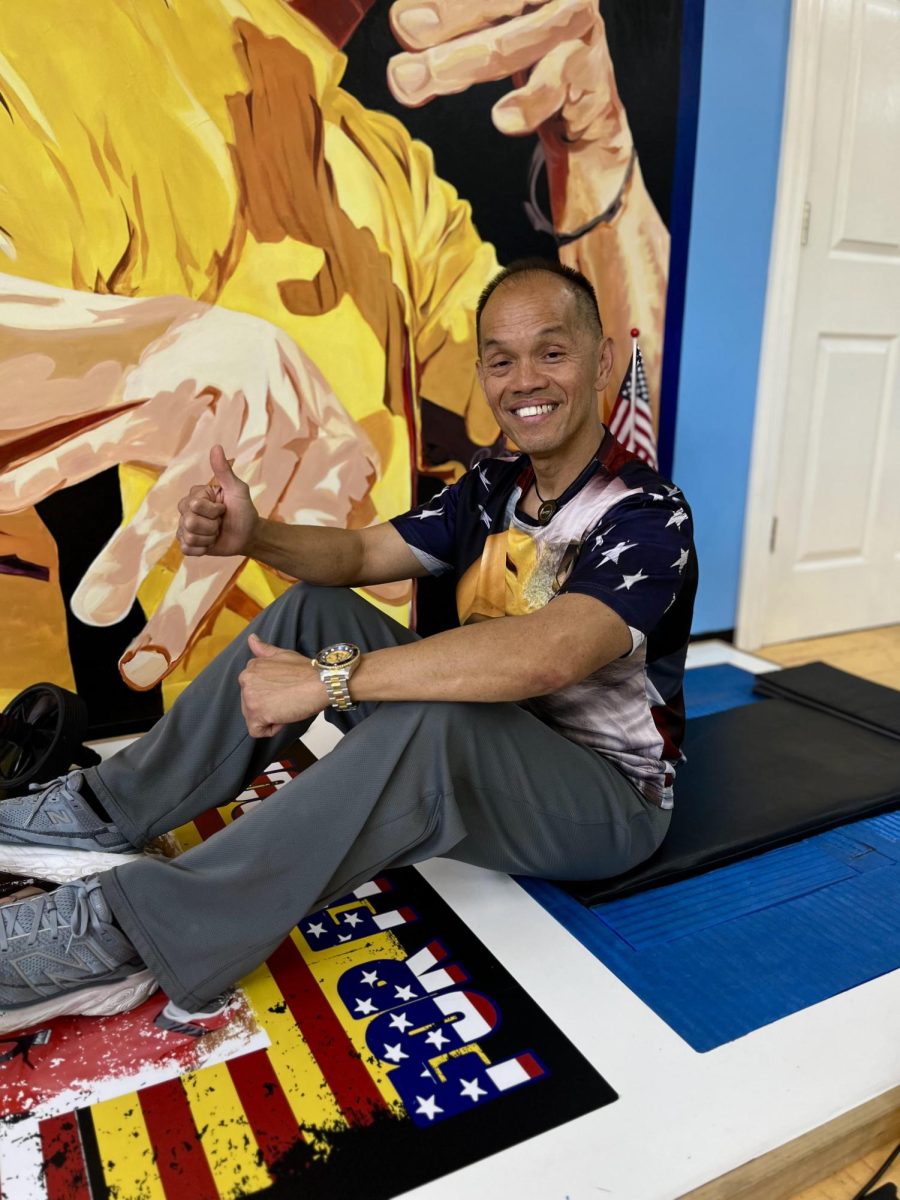Award-winning documentary makes case for inventor of modern steel
Story by Gisselle Hernandez, Features Editor

Bommanna Loganathan, professor of chemistry, won the National Historical Chemical Landmark for his work on William Kelly.
Inventors. Science. Tragedy. British secret agents. Essentially, these are all the elements found in a “Bond film,” Todd Hatton, WKMS news producer, said in reference to the national award-winning William Kelly audio documentary, which aired in May 2015.
“Western Kentucky: A Birth Place of Steel,” a documentary produced by WKMS on the Kentuckian who propelled the United States into its industrial era, won the Sigma Delta Chi award of excellence from the Society of Professional Journalists, which was presented to the station during the week of April 18.
This is the second SPJ award the station has received. The documentary required extensive research collected from historians and experts, along with documents supplied by Bommanna Loganathan, professor of chemistry and 2014 chairman of Kentucky Lake Section of the American Chemical Society, who was the reason the documentary was produced in the first place.
THE ORIGIN
Loganathan was taking his class on a trip to Land Between the Lakes National Recreation Area in January 2014 when he stumbled upon a furnace that was initially put there by Kelly, who invented a more efficient way of producing steel in the 1800s. Loganathan became so fascinated with the inventor and his story he immediately set to work on researching this Kentucky native no one knew anything about.
Kelly’s story is a humble one – a man too focused on his globally-impactful invention to patent his methods, and the gray area of implied intellectual property theft when an Englishman, Henry Bessemer, somehow coincidentally “invented” the same process to produce steel in the United Kingdom at the same time and decided to patent it. This was right after two of Kelly’s employees, who happened to be English and obsessively interested in the steel-making process, vanished one night from the foundry in Eddyville, Kentucky, without notice.
For a long time, Kelly didn’t received fame for his invention, even after appealing Bessemer’s patent and receiving his own. It wasn’t until centuries later – last May – that Kelly received recognition when the Jesse D. Jones Chemistry Building and the public library in Eddyville received a plaque honoring Kelly. This was because of Loganathan’s research on Kelly winning the National Historical Chemical Landmark.
“It is so important, so valuable, finding that which changed the history of the world,” Loganathan said. “Non-industrial world to industrial world. Humanity itself was changed just by this man.”
THE RESEARCH AND PRODUCTION
WKMS, after hearing the story of a Kentucky native’s invention that changed the world, decided to dig deeper to put together a documentary that would educate and entertain listeners for 50 minutes.
WKMS searched for information for about three months, sent a field reporter to speak with local historians in Eddyville, called a Bessemer expert in England and read anything about Kelly they could get their hands on. Though there was not enough evidence to claim Kelly’s methods were impersonated, Hatton said WKMS’s job was to craft a story of the facts and let the listeners formulate their own conclusions.
Chad Lampe, WKMS station manager, said one of the challenges was diving into this project with little knowledge of who Kelly was. He said this particular documentary was unique because of the limited resources available.
“For other documentaries, a lot of it has been well-documented and well-recorded in history, making it easier,” Lampe said. “It was much harder to find things about this guy because he was relatively unknown to the wider region.”
Because of the lack of visual aid, WKMS had to get creative in placing the listener into the right setting when listening to the story.
“[We had to] find a way to create an atmosphere and character and elements of a good story to carry it for an hour-long program,” Lampe said.
Hatton agreed, saying it is imperative to paint the right picture and add a combination of sounds that appeal to listeners, especially if it’s a documentary about the mundane process of making steel. The documentary included connections to modern times, like the addition of Pharrell Williams and Robin Thicke’s “Blurred Lines” for the alleged dispute between Bessemer and Kelly. The time that would usually be used to pan across a landscape on television had to be filled up with actual vocal and auditory descriptions of what the producers wanted the listeners to imagine, which lends an opportunity to saturate the documentary with more information. This is something Hatton said he saw as an advantage.
THE IMPACT
WKMS’s documentaries normally trace back to the history of areas their frequency covers, so producing a documentary about a man who changed the world right in western Kentucky is hard to understate, Hatton said.
Hatton said the impact of both Kelly and Bessemer make for a great story, especially considering the world as we know it would be completely different without them.
“Basically, if you take Kelly and Bessemer out of the equation, you don’t have cannons or railroads or skyscrapers,” Hatton said. “You don’t have the Empire State Building if you don’t have William Kelly plugging away at his foundry.”
Hatton said because people are so familiar with what they know, they do not consider what “here” really means, especially when important history is overlooked.
“I’m under no illusion that I’m changing the world,” he said. “But if at least I’m giving someone a good time for 50 minutes, it’s [worth it.]”
Most people tend to overlook the rich history that lingers in their hometown, tucked away, Hatton said. But he said one should take pride knowing one of their own is responsible for America’s modern industrial thrust.
“[People say] ‘Oh, you’re from Kentucky, look you’re wearing shoes,’” he said. “Yes, I’m wearing shoes and no, I’m not married to my cousin. I’m very proud to say I’m a native-born Kentuckian.”
Hatton, Lampe and news reporter Allison Crawford will receive the SPJ award at the National Press Club banquet on June 24, 2016, in Washington, D.C.
“I do it because, well, I enjoy it. And I think it’s valuable. We all think it’s valuable,” Hatton said. “Yeah, it covers the station in glory and so on and so forth, but at the end of the day, it’s public service. It’s education. That is why we are here. Full stop.”



























































































